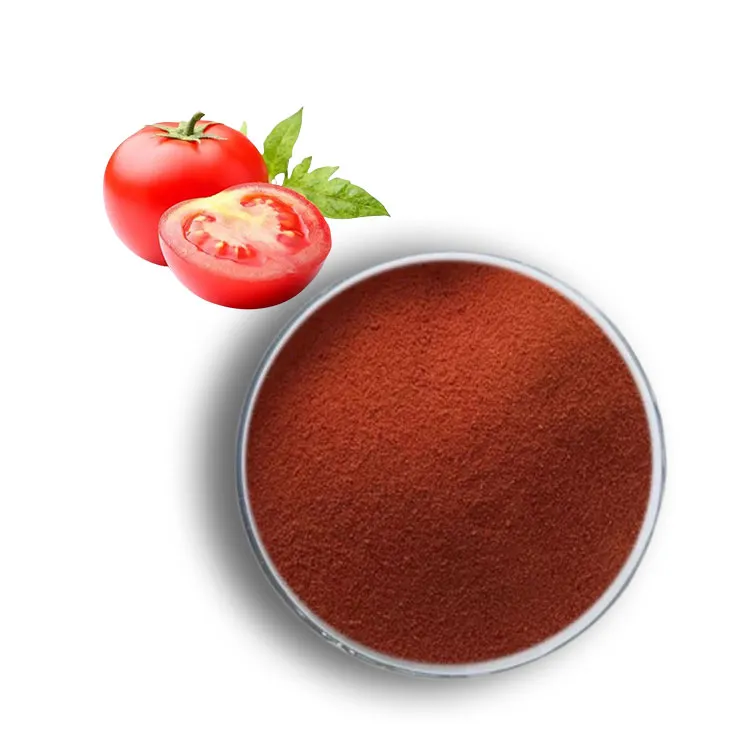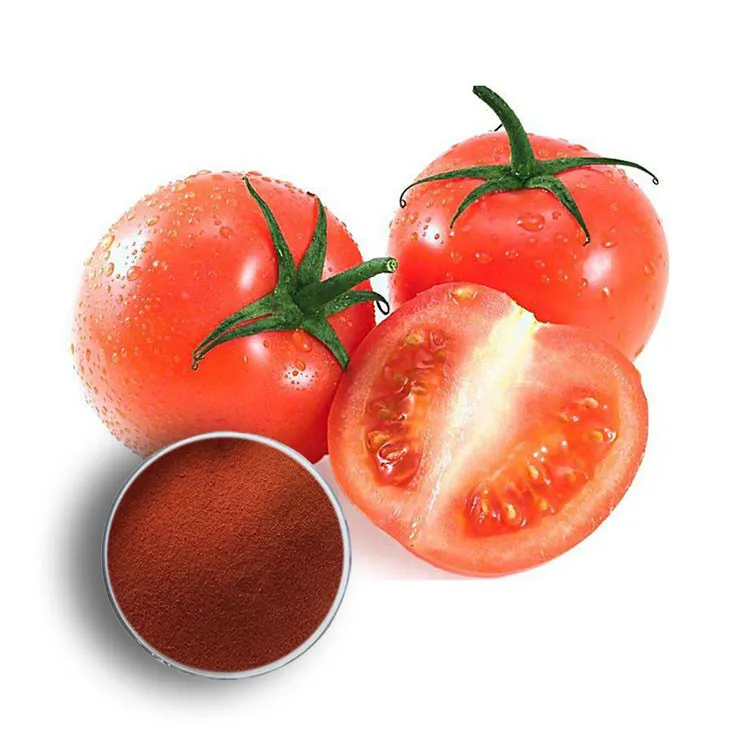- 0086-571-85302990
- sales@greenskybio.com
The pure lycopene most worth buying.
2024-11-30

Introduction
Pure Lycopene has gained significant attention in recent years due to its numerous health benefits. As a powerful antioxidant, it has the potential to play a crucial role in maintaining good health. However, finding the pure Lycopene product that is most worth buying can be a challenging endeavor. There are several factors that consumers need to consider in order to make an informed decision.

Purity of Lycopene
Purity is of utmost importance when it comes to choosing a pure lycopene product. Lycopene should be free from contaminants and additives. Contaminants can reduce the effectiveness of lycopene and may even pose potential health risks. For example, if there are traces of heavy metals or pesticides in the lycopene product, it could have a negative impact on the body.
Additives are another concern. Some products may contain fillers or other substances that are not related to lycopene. These can dilute the concentration of lycopene and may not provide the expected health benefits. A pure lycopene product should consist mainly of lycopene itself, without any unnecessary extras.

Price - Value Ratio
The price - value ratio is a key factor in determining the worth of a pure lycopene product. While high - quality lycopene may be more expensive to produce, consumers should not have to pay exorbitant prices.
Some products on the market may be overpriced due to brand names or marketing strategies. It is important to compare prices among different brands and products. However, the cheapest option may not always be the best. A very low - priced lycopene product may be of inferior quality or have a lower concentration of lycopene.
To assess the price - value ratio, consumers can consider the amount of lycopene per unit price. For example, if one product offers 100mg of pure lycopene for $20, while another offers 50mg for $15, the first product may have a better price - value ratio, assuming all other factors are equal.

Product Transparency
Product transparency is essential when evaluating pure lycopene products. Manufacturers should be clear about the source of the lycopene. Lycopene can be derived from various sources, such as tomatoes or other fruits and vegetables. Knowing the source can help consumers determine the quality and potential purity of the lycopene.
The manufacturing process should also be disclosed. This includes how the lycopene is extracted, purified, and formulated into a product. A clean and reliable manufacturing process is more likely to result in a high - quality pure lycopene product.
Additionally, any relevant certifications should be clearly stated. Certifications such as Good Manufacturing Practice (GMP) or third - party quality testing can provide assurance of the product's quality. If a product has these certifications, it is a positive sign that it meets certain standards.
Customer Reviews
Customer reviews play a significant role in determining the most worth - buying pure lycopene product. Positive feedback from other users can be a strong indication of a product's quality and effectiveness.
When reading customer reviews, it is important to look for patterns. If multiple users mention positive effects such as improved antioxidant levels, better skin health, or reduced inflammation, it is likely that the product is effective. On the other hand, if there are consistent complaints about side effects, ineffectiveness, or poor quality, it is a red flag.
However, it is also important to be cautious when relying on customer reviews. Some reviews may be fake or influenced by marketing. It is advisable to look for reviews on independent platforms or from reliable sources.
Source of Lycopene
As mentioned earlier, the source of lycopene is an important consideration. Lycopene is most commonly found in tomatoes, and tomato - based products are often a rich source of this antioxidant.
Tomato - derived lycopene may be more bioavailable compared to lycopene from other sources. Bioavailability refers to the amount of a substance that can be absorbed and utilized by the body. Tomatoes contain other nutrients and compounds that may enhance the absorption of lycopene.
However, lycopene can also be obtained from other fruits and vegetables, such as watermelon, pink grapefruit, and apricots. These sources may offer different profiles of nutrients along with lycopene, which could have additional health benefits.
Extraction and Manufacturing Processes
The extraction and manufacturing processes used to obtain pure lycopene can significantly impact its quality. There are different methods of extracting lycopene from its source materials.
One common method is solvent extraction. In this process, solvents are used to separate lycopene from the plant material. However, it is important to ensure that the solvents are safe and do not leave any harmful residues in the final product.
Another method is supercritical fluid extraction, which uses supercritical fluids such as carbon dioxide. This method can be more environmentally friendly and may result in a purer form of lycopene.
After extraction, the manufacturing process includes steps such as purification, concentration, and formulation. These steps should be carried out under strict quality control to ensure the final product is pure and of high quality.
Concentration and Dosage
The concentration and dosage of lycopene in a product are important factors to consider. Different products may contain different concentrations of lycopene.
The appropriate dosage of lycopene can vary depending on individual health needs and goals. For general health maintenance, a lower dosage may be sufficient. However, for specific health conditions or for those with higher antioxidant requirements, a higher dosage may be necessary.
It is important to follow the recommended dosage instructions provided by the manufacturer or as advised by a healthcare professional. Taking too much or too little lycopene may not provide the desired health benefits.
Quality Control and Testing
Quality control and testing are crucial aspects of ensuring the purity and effectiveness of pure lycopene products. Manufacturers should have in - place strict quality control measures throughout the production process.
This includes testing the raw materials for purity and quality before production, as well as testing the final product. Testing can involve various methods such as spectroscopic analysis to determine the concentration of lycopene and to detect any contaminants.
Third - party testing can provide an additional layer of assurance. Independent laboratories can test the product and verify its quality, which can be more reliable than relying solely on the manufacturer's own testing.
Conclusion
In conclusion, finding the pure lycopene product that is most worth buying requires careful consideration of multiple factors. Purity, price - value ratio, product transparency, customer reviews, source of lycopene, extraction and manufacturing processes, concentration and dosage, and quality control and testing all play important roles.
Consumers should take the time to research different products, compare their features and prices, and read customer reviews. By doing so, they can make an informed decision and choose a pure lycopene product that offers the best combination of quality, effectiveness, and value.
FAQ:
Q1: How can I determine the purity of pure lycopene?
You can look at the product label. A pure lycopene product should clearly state that it is free from contaminants and additives. Also, some products may have certifications that vouch for their purity. You can research the reputation of the brand as well, as reliable brands are more likely to produce high - purity lycopene.
Q2: What is a reasonable price - value ratio for pure lycopene?
The price - value ratio can vary depending on factors such as the source of lycopene and the manufacturing process. Generally, you should compare different products in the market. If a product offers a high concentration of pure lycopene at a relatively lower price compared to others with similar quality, it has a better price - value ratio. However, be cautious of products that are extremely cheap as they may sacrifice quality.
Q3: Why is product transparency important when buying pure lycopene?
Product transparency is important because it allows you to make an informed decision. When manufacturers clearly state the source of the lycopene, you can assess its quality. For example, lycopene from natural sources may be preferred by some consumers. The manufacturing process can also affect the final product's quality. And relevant certifications give an indication of the product's compliance with certain standards.
Q4: How reliable are customer reviews when choosing pure lycopene?
Customer reviews can be quite reliable. Positive reviews from other users often indicate that they have experienced benefits from the product. However, it's important to look at a large number of reviews to get a more accurate picture. Also, consider the credibility of the review sources. Some websites may have more reliable reviews than others.
Q5: Can you recommend some brands that offer pure lycopene with a good price - value ratio?
There are many brands in the market, but it's difficult to recommend specific ones as it depends on your location and availability. However, some well - known and reputable supplement brands often offer pure lycopene products. You can research brands that have been in the market for a long time and have good customer feedback. Additionally, comparing prices and product features across different brands at local health stores or online platforms can help you find a brand with a good price - value ratio.
Related literature
- The Antioxidant Activity of Lycopene: A Review"
- "Lycopene: Sources, Properties, and Health Benefits"
- "The Role of Lycopene in Human Health: An Overview"
- ▶ Hesperidin
- ▶ citrus bioflavonoids
- ▶ plant extract
- ▶ lycopene
- ▶ Diosmin
- ▶ Grape seed extract
- ▶ Sea buckthorn Juice Powder
- ▶ Beetroot powder
- ▶ Hops Extract
- ▶ Artichoke Extract
- ▶ Reishi mushroom extract
- ▶ Astaxanthin
- ▶ Green Tea Extract
- ▶ Curcumin Extract
- ▶ Horse Chestnut Extract
- ▶ Other Problems
- ▶ Boswellia Serrata Extract
- ▶ Resveratrol Extract
- ▶ Marigold Extract
- ▶ Grape Leaf Extract
- ▶ blog3
- ▶ blog4
-
Certified organic aged garlic extract.
2024-11-30
-
Active components in yam extract.
2024-11-30
-
Extraction process of stevia extract.
2024-11-30
-
Chinese Grape Seed Extract Powder Factory.
2024-11-30
-
Chasteberry Extract
2024-11-30
-
Beta Carotene
2024-11-30
-
Sea buckthorn oil
2024-11-30
-
Garcinia Cambogia Extract
2024-11-30
-
Thunder God Vine Extract
2024-11-30
-
Stevia Extract
2024-11-30
-
Phyllanthus Emblica Extract
2024-11-30
-
Kelp Extract Powder
2024-11-30
-
Nettle Root Extract
2024-11-30
-
Natural grape seed extract
2024-11-30





















